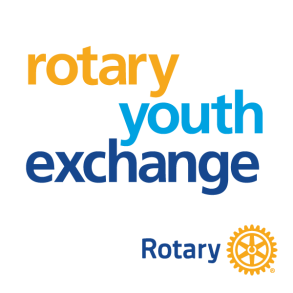When Myrna Findt (RC of Spr uce Grove) meets with students returning from their year-long Rotary Youth Exchange, it reinforces the decision she made to become the District 5370 Youth Exchange chair.
uce Grove) meets with students returning from their year-long Rotary Youth Exchange, it reinforces the decision she made to become the District 5370 Youth Exchange chair.
“The changes in these kids and the personal growth and the potential of all these kids with this type of change is tremendous,” she says. “You can see the difference. That’s all I need to be absolutely supportive of the program.”
The students’ experience of living and studying in another country can have lifelong effects, says Myrna. “The decision they make about what they want to do later on is very often reflective of the kind of experience they had.”
Myrna recalls receiving a phone call from a parent who was surprised by what she had heard from her son. “The kid who was just to have been in Finland for a year, calls over and says, ‘Mom, I’ve already looked into the option of doing my university here in Finland.’ ”
Mryna hopes more clubs will provide students with similar experiences by deciding to participate in the Rotary Youth Exchange program. “We are really hoping to grow the program,” she says.
Myrna sees her role as a support to the clubs that participate in the exchange program.
She hopes to be a resource for clubs interested in learning more about it. “No matter where they are, I will find a way to come and talk to them in person if they are interested, as part of a club meeting or whatever works,” she says. If she can’t attend a meeting in person, she will meet with them virtually, via Zoom or Facetime.
Currently, the District has 10 outbound students in other countries, and clubs in our District are hosting nine inbounds from these same countries (one student chose to return home early).
During 2020-2021, there will be 11 each of outbound and inbound students.
“We had 14 clubs interested for the coming year,” Myrna says. “Unfortunately, not all the clubs were successful in recruiting students.”
The program is an exchange between Rotary Districts. “It’s a one-in, one-out,” Myrna says. “We send one student to a District and we receive one from that District.”
The inbound students are hosted by clubs, either individually or in partnership with another club.
Participants are high school-aged students and all attend school where they are living for the year.
During this year, the exchange includes Districts in eight countries—Finland, Austria, Italy, Switzerland, France, Belgium, Japan and Denmark.
For students wishing to be part of the exchange, the process begins with face-to-face interviews with representatives of the sponsoring club.
“The clubs identify their successful candidate and ask this candidate to send an application to the District,” Myrna says. “Then we do interviews on a District level. This is not to pick the students. It’s more to confirm the club’s choice.”
Once the outbound students are selected, the District helps prepare them for their year of exchange.
“We have an outbound bootcamp for them in March, where they work with the outbound counsellors from their clubs,” Mryna says. “As well, we provide online language training, once we know which country the (students) will go to. They are expected to complete about 200 hours of language training before they go to their host countries.”
The District also assists with the administrative tasks related to the exchange, “but the hosting and fun part is done by the clubs, providing host families, having events, taking them on trips, making sure they go to school,” Myrna says.
“The District provides help with the paperwork in regard to visa application. We work with travel agents to book their flights. We work with the host District to decide when they should arrive.
“We work with the [outbound] counsellors so they can build a relationship with the students and with the parents, which is very important for a successful exchange. It is important that parents are aware of what’s going on and how everything should work.”
The students usually begin their exchange in August, when they fly to their host country. That’s also when the inbound students arrive in Canada.
“They are picked up by their inbound counsellors, and sometimes other members from their host clubs, from the airport,” Myrna says.
“The District provides an inbound weekend, when we welcome all of them. We give them training on how to deal with the first host families, what they will see when it comes to work in school and what’s different,” she says.
“Then we organize some mandatory events throughout the year and well as some optional trips for them. The students are supposed to go to the District conference, the inbound training, and at the end of their year here we have training to support them and prepare them for what they will experience when they return to their country. We call that ‘reverse cultural shock.’ ”
The District collects a fee from clubs participating in the Youth Exchange program, which covers costs related to transportation, training, and insurance.
How they finance this is up to the clubs. “Some clubs just pay it out of their club budgets. Some clubs ask parents to pay a specific fee to the club,” Myrna says. “Some clubs pay additional money to the outbounds, because usually in other countries they also have optional trips.”
Myrna’s contact information: myrna@findt.net or (780) 292-2931.